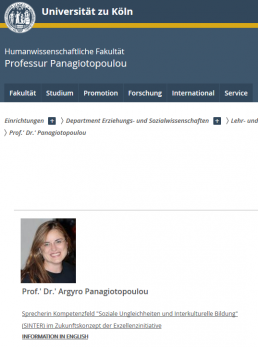Language immersion
Diving into a new sorrounding
The limit of our ability to speak is the limit of our horizon. In this sense, multilingualism is a way to leave behind our own limitations and to expand our view of the world. In addition, neuroscience has proven that early childhood language acquisition also develops the child’s cognitive abilities. Young children absorb languages easily and more so during the first three years of life. At rainbowtrekkers, German and English are equally used as languages of instruction and learning.
rainbowtrekkers are open to children who are exposed to English at home as well as children coming from homes where English is not spoken at all. We follow the idea of “language immersion” as put forth by the German Verein für frühe Mehrsprachigkeit. It is based on the principle of total immersion according to which the child is surrounded by the target languages and the children learn them while engaging in daily activities and through play.
The shortcomings of "traditional" bilingual kindergartens
Classically, bilingual day care centers in Europe have worked according to the concept of “one person – one language”. According to this, children should be in contact with the respective native speakers, e.g. learn either “proper English” or “good German”. This was based on a conventional conception of languages ??as quasi-autonomous, definable systems that are additively acquired in a clear order (L1, L2, L3, etc.) as monolingual codes. Speech mixing was considered a departure from the norm, as competent multilinguals would allegedly no longer mix their languages.
In fact, through this practice, children have been (at best) educated as double monolinguists. This is particularly evident in the comparison with classical multilingual countries such as e.g. Switzerland, Luxembourg, Israel or India. In these societies, language choice and usage are much more flexible and dynamic. Language use in these societies is based both on the topic of conversation and addressee. For example, a well-educated Indian couple who works in the IT sector may discuss professional issues directly in English for its specialist terminology, while communicating in the local language Mahrati in private matters based on its biographical familiarity, while talking Hindi in front of business partners in Delhi in order not to exclude these.
Another example, a rabbi in an Israeli yeshiva may prefer to speak English in his daily life with his students, change to Hebrew and Aramaic when doing source study, and then tell a joke to the same students in Yiddish, because the joke hits only in that language.
The concept of “one person – one language” has so far blocked such kind of multilingualism in our day care centers. In the past, following the concept of most other bilingual kindergartens in Europe, we at rainbowtrekkers have had hired educational staff based on a language (they were hired as either English or German speakers). This has regularly led to bizarre situations, such as when a German-speaking educator wanted to hide from the children, that she also speaks English or when foreign colleagues used pedagogical terminology in German and were “reprimanded” by parents or leaders according to the motto: “You may only speak English here.”
Translanguaging and flexible language use
At rainbowtrekkers nowadays we assume that multilingual individuals in monolingual settings can and should communicate in a monolingual way, but that in a multilingual setting – as our day-care centers are – a flexible and more dynamic language usage is natural and accepted.
This approach can be termed “translanguaging”. Rainbowtrekkers are an active member of the project group “Translanguaging in everyday life of multilingual kindergartens in Cologne”, which is affiliated to the Department of Education and Social Sciences of the University of Cologne. The group is headed by Prof. Dr. Ing. Argyro Panagiotopoulou. She writes in the magazine of the Center for Multilingualism and Integration Cologne (December 2018):
When multilingual children speak, write or calculate, they do not use separate languages or language systems, but their whole cross-language repertoire. In order to communicate with multilingual people, even young children combine linguistic elements into an integrated whole, which is adapted to the respective situation and the repertoire of their interlocutors. From a monolingual perspective, this seems somewhat extraordinary, but from the perspective of multilingual children, this dynamic usage is a matter of course.
For our staff recruitment at rainbowtrekkers that means that – unlike earlier – employees are no longer hired as “German-speaking” or “English-speaking” educators, but that when hiring all employees commit themselves to prove bilingualism in German and English at least at level B2 or catch up promptly.
Furthermore, we would like to integrate the different family languages of our children even more in the day-to-day care, be it in the morning circle or in game situations. We also invite all parents to engage with their language repertoire and family culture, e.g. by reading aloud, telling, singing, dancing, researching, building, celebrating, cooking and the like.
Members of:




